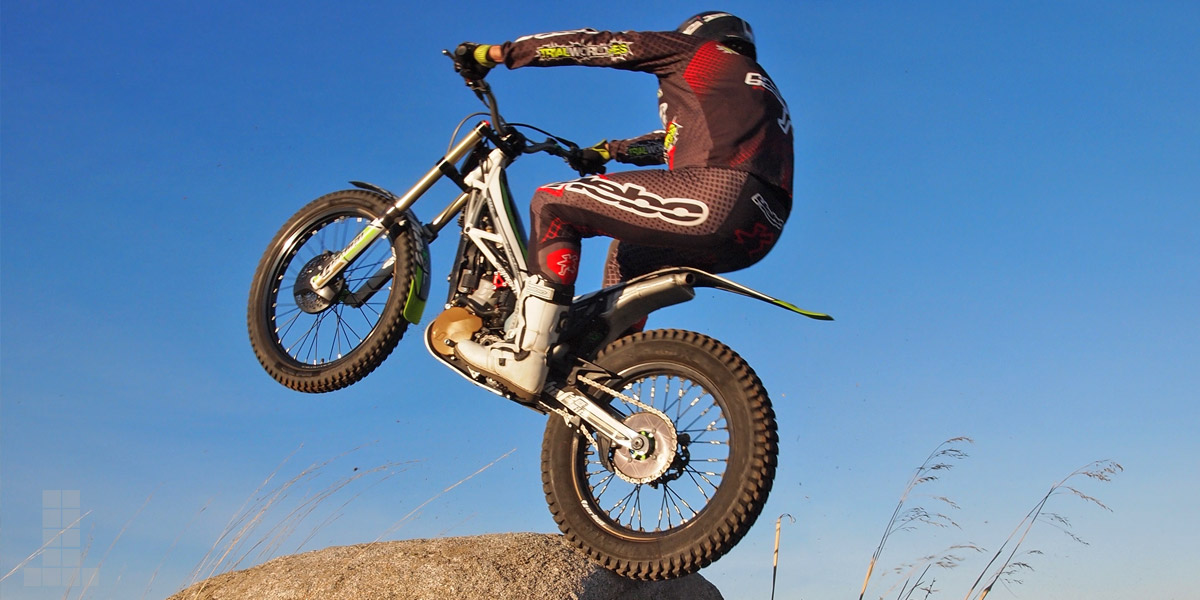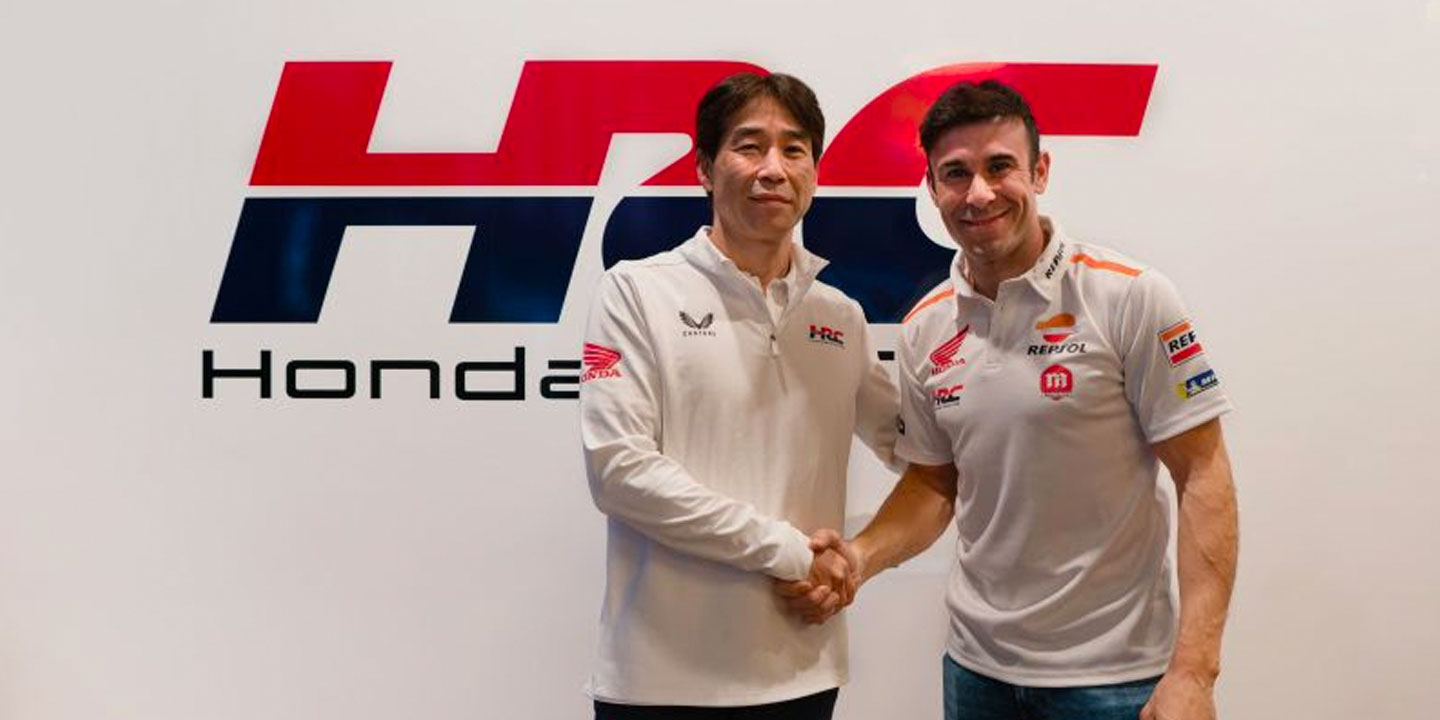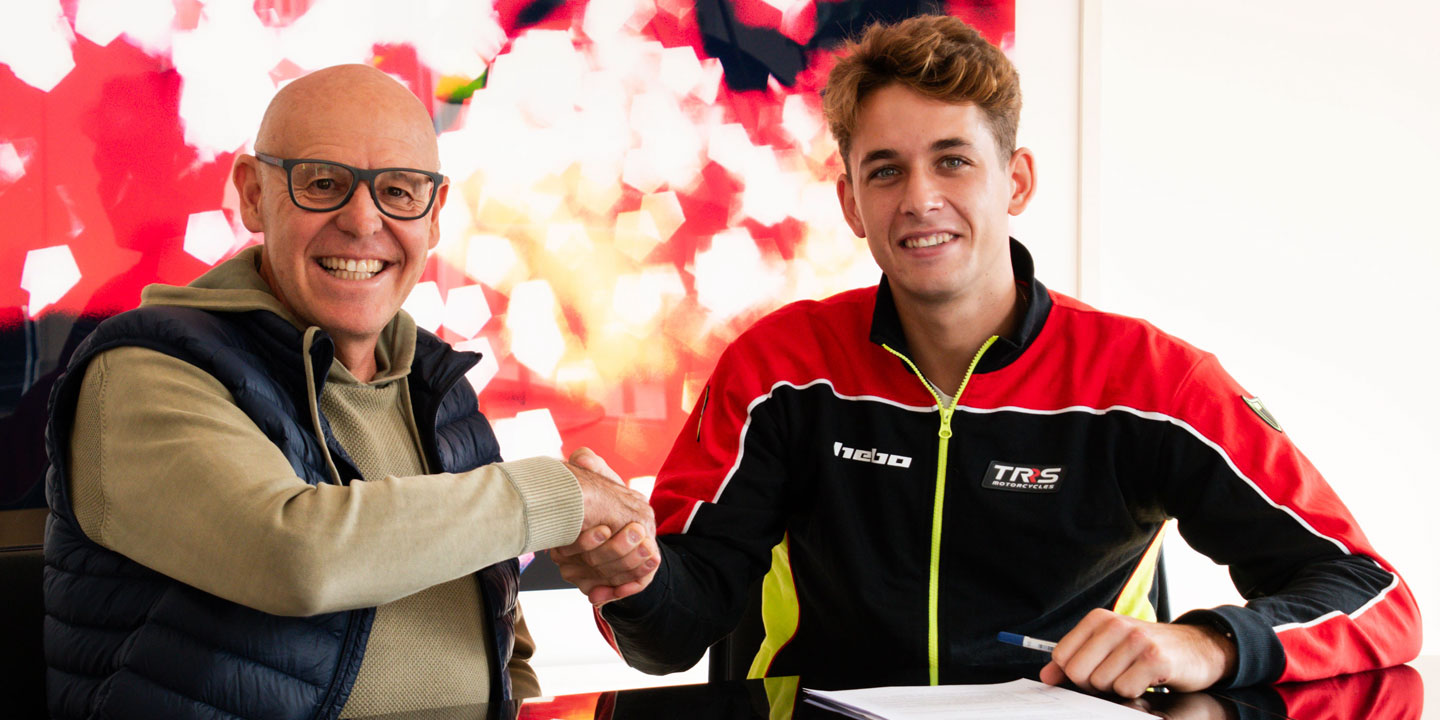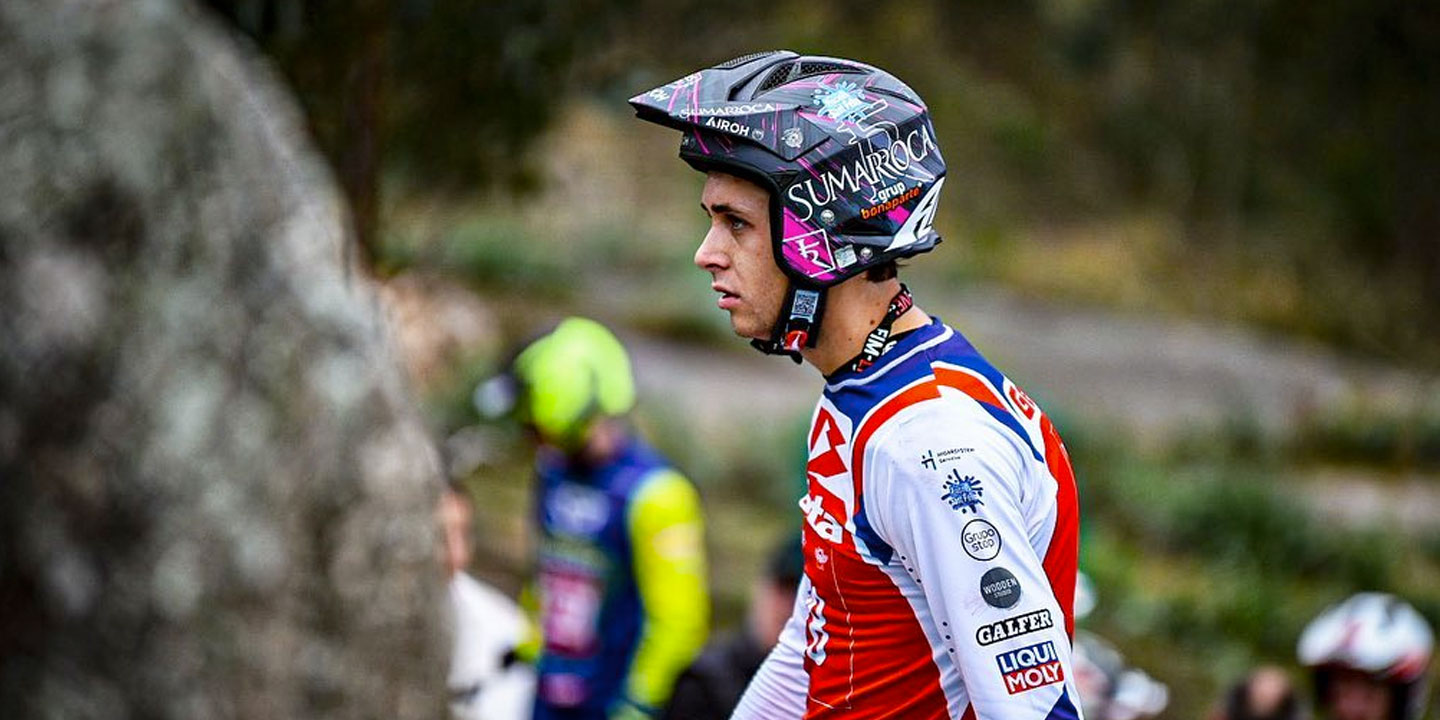Vertigo is a brand conceived from the trial passion of its owner, Manel Jané. Starting from the idea of embarking on a project without restrictions and the ambition to make a qualitative leap in terms of technological evolution and technical solutions applied to trial.
To do this, Vertigo needed to surround itself with top-notch professionals and an exemplary project manager. The chosen one was Dougie Lampkin. The grand debut we saw at the
2015 Milan Motor Show
was the starting point for the brand’s ambitious expectations both in competition and in the market.
The 2017 Vertigo range is made up of four models. The catalogue starts with the Vertigo Vandal, which will be presented in the coming days, followed by the Vertigo Combat Camo, the Vertigo Combat Ice Hell – the protagonist of this test – and completing the range we have the exclusive Vertigo Titanium R
See prices for Vertigo Combat.
The common denominator in all the range is its 2-stroke engine powered by electronic injection, a technical solution that only has a precedent in the now defunct Ossa. Below we break down with Roberto Arenas, collaborator and instructor of Trialworld, all the keys to the Vertigo Combat Ice Hell 300cc.
CONCEPT, DESIGN AND MATERIALS
The Vertigo Combat Ice Hell can boast of being equipped with the highest quality components, with an emphasis on the finishes and materials used in production. The design section is always something very personal, but its line is futuristic and breathes aggressiveness, something that we will see later how it corresponds to the spirit of its 2T injection mechanics.

In the case of the Ice Hell we have a chassis built in 15CDV6 steel and 6082 aluminum, finished in white. The frame houses the 2.3-litre fuel tank at its lowest part, designed to lower and centre the centre of gravity as much as possible. The filling process has to be done little by little, as it swallows slowly. A good solution is that the tank is transparent to control the fuel level. Another peculiarity is the mixture of gasoline and oil, which Vertigo recommends setting at 0.75%.
As a result of this repositioning, the air filter takes the natural place of a fuel tank, favoring cleaner air and a box with an air capacity of 1.1 liters.

Vertigo announces a final weight for the Combat Ice Hell of 68 kg.
THE ENGINE OF VERTIGO COMBAT
The power of electronic injection is more than proven in 4-stroke bikes, but in a two-stroke bike, especially a trial bike, there was still a long way to go on that path that Ossa already started in 2011. This a priori can be a point of distrust for the fan, who may come to understand that carburetion-powered systems provide more confidence and less complexity.
That was one of Vertigo’s challenges. The advantages of this injection system are that it allows you to optimize the performance of the engine more precisely and vary its behavior depending on the weather or terrain circumstances. We must recognize that you need to familiarize yourself with their response and understand their protocols for optimal maintenance.
31 HP
The Vertigo Combat’s 300cc engine offers unprecedented power terms, but the electronic management allows it to be an easy engine to drive, with a smooth power delivery that is as powerful as it is when you squeeze the throttle and need power to make climbs and steps of the highest level.
Injection keeps the engine “full” at all times and in any gear. This is mainly perceived when we are going to do a fairly long and steep dirt climb, where the bike responds greatly, with a 3 and 4 speed that stretch a lot.
Broadly speaking, the exchange rate is correct. In the first class you can drive calmly and controlled, while in the second you can face most of the obstacles with guarantees.
Let’s now see how the power control devices read the dashboard of the Vertigo Combat Ice Hell
A) Map Selector
B) Temperature warning light
C) Map warning light
D) Contact/Stop Button
In addition The bike has 4 power delivery maps. AndDepending on the type of terrain on which we are going to ride, we have the option to select one or the other. The selection of the same is done by pressing a button that we have on the headlamp mask. We will know which one or the other is based on the number of flashes that the MAP LED gives.
Map 1 – Standard map we have when we start the bike. Detail only once.
Map 2– It’s somewhat richer, flashes twice.
Map 3 – Richer than Map 2 – Flashes 3 times
Maps 2 and 3 are usually used more for wet or poorly adhered terrain.
Map 4– It is the driest of all, it is recommended for altitude and also for making steep steps. The LED illuminates 4 times.
Whenever we stop the bike, we will return to map 1.
In addition, the bike is equipped with a connector that, through a cable and connecting to the computer with the relevant software, can be readjusted at the dealership to the rider’s tastes.
We asked Vertigo if there would be the possibility that the user could carry out these tasks at home and they told us that they are studying the possibility of offering software with those most basic aspects that allow the amateur to be able to change the configuration by themselves.
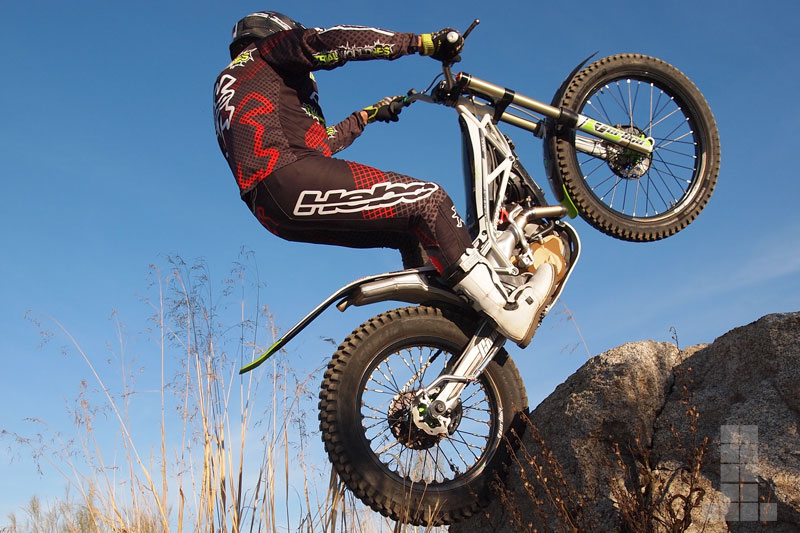
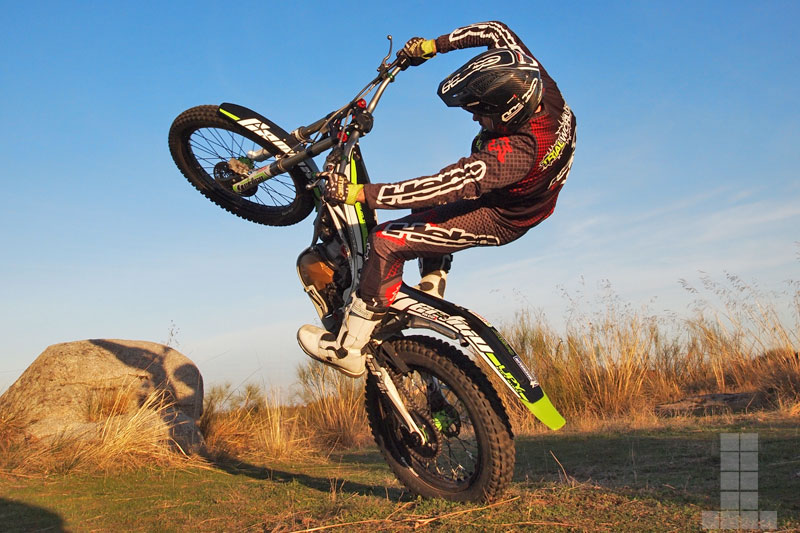
THE CLUTCH
The clutch of the Vertigo Combat is diaphragm and has a very interesting peculiarity. As it wears out and we notice that the clutch slips, we can change its position. This is intended to extend the life of the clutch. We have three different positions to change the feel of it.
STABILITY
Another of its virtues is the stability that the set offers us. The weight distribution and the centre of gravity that it has thanks to the tank arrangement located under the we, as well as the geometries of the frame itself, make this possible.
A priori when you take it for the first time you have the feeling of a “heavy” bike in the rear, although on scales it is at 68kg. On the other hand, it moves very well and within the areas it goes where you choose, it goes very much on the ground and respects the line.
SUSPENSIONS
The suspensions of the Ice Hell (different from the Camo) are some of the best we can find on the market. The front end is entrusted to an aluminum Tech fork where we can adjust in hardness, as well as absorption speed and return.
On the bar on the left we can adjust the preload of the shock absorber, if we turn to the left we will soften the suspension and if we turn to the right we will make it harder.
On the bar on the right we have a screw that allows us to regulate the speed of absorption and return, turning to the left slows down and to the right we accelerate absorption.
The rear shock absorber is a Reiger that allows four different types of adjustment.
1- Preload adjustment of the spring (A) depending on our weight we can adjust it by means of two rings, the bike normally comes adjusted for a standard weight of 70-80kg and we are heavier it would be convenient to change the spring for a more resistant one. But as a general rule, it is not usually changed.
2- Compression regulation (B). This Ice Hell has a purple wheel at the bottom of the shock with which we can adjust the compression quickly, we will turn to the right to increase and to the left to decrease. Normally it is usually worn somewhat loose compared to how it comes as standard.
3- Inside the purple wheel there is another green screw that allows us to regulate the slow compression, ideal for water areas when we want the bike to be very close to the ground. The regulation process is the same.
4- Rebound Adjustment (C), it is located in a screw that is located at the top of the shock absorber, we can adjust it with a flat screwdriver. With it we adjust the stability and traction of the bike.
Without a doubt, the possibilities offered by this shock absorber are almost endless, the best thing to do is to take a screwdriver to our usual test area and adjust it.
STEPS TO START VERTIGO COMBAT
The start-up a priori can be somewhat “tedious” but once used to it is very simple. The bike has a button in the center of the handlebars that serves to start and stop it at the same time.
If we want a “man overboard” connector we must request it because it is a component of the special parts catalog.
To get it up and running, it is necessary to follow the following process:
Step 1: press the button, a flashing red LED lights up on the headlight face shield indicating that the bike is ready to start.
Step 2: let the pump prime the circuit (3-4 sec) and give a vigorous kick with a minimum of 1/4 gas.
Important: You have 15sec to start the bike, otherwise the ECU will turn off and the process will have to be repeated.
If the bike is cold, it usually doesn’t start at the first time and it is necessary to give another kick. This process is made possible by a 9v rechargeable battery inside the filter box. Vertigo recommends disconnecting the battery if the motorcycle must be stopped for more than 10 days, since in every electrical system there is residual consumption and in this case, using such a small battery can cause the discharge and therefore not start.
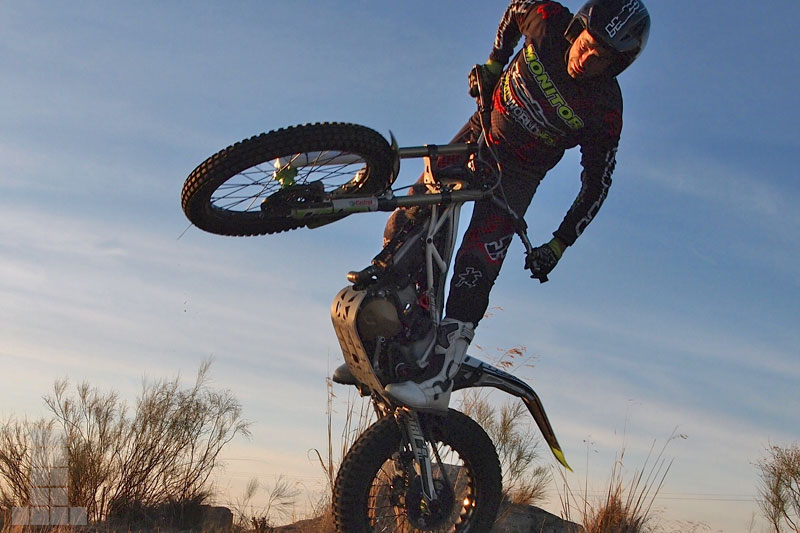
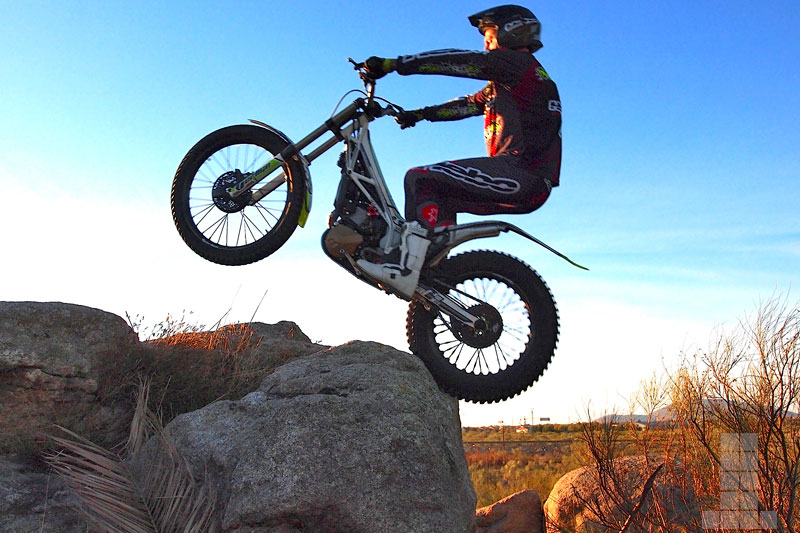
Likewise, Vertigo is finalizing the batteryless system that will eliminate the battery and therefore this issue will be settled.
Important. It is advisable to have a battery charger and a spare battery charged, especially when we go on long excursions.
When we are doing areas or excursions and the bike is hot, it usually starts very well at the first time, but always pressing the start button. It is also important that if we are at a slow pace at the tip of the gas making an excursion from time to time we clean the spark plug by giving a couple of accelerations so that it does not get greased. This is a tip of mine to avoid spark plug greasing problems.
In relation to this, it is vitally important that the gasoline blend goes to 0.6%, although Vertigo recommends 0.75%.
MAINTENANCE TIPS FOR VERTIGO COMBAT
The air filter is located at the front where other motorcycles usually have the fuel tank, it is very easily accessed by removing an allen screw, pulling the filter upwards we remove it.
Once it has been cleaned, we must proceed to clean the filter box and the nozzle where the filter is inserted. When putting it back in, we must take special care so that the O-ring that comes with the filter does not stay outside the nozzle. A tip may be to give a little grease or oil to make it glide better.
The spark plug on this motorcycle is very important to keep the spark plug in good condition for the proper functioning of the motorcycle and above all for it to start us correctly.
If the starting process is not carried out correctly or if we put more oil than necessary in the gasoline, the spark plug can get greasy and give us problems starting the bike. If this happens to us, we will proceed to remove it, for which we must remove the air filter box and with a 19 wrench we will proceed to remove it.
The spark plug with a café-au-lait color will be a good indication that it is working properly. If it is greased, we will clean it or replace it with another one. The distance of the electrode and the arc should be 0.7mm.
Below is a video with the test of the Vertigo Combat Ice Hell.
Vertigo Combat Ice Hell Price: 8.000€
VERTIGO COMBAT ICE HELL 300 IN-DEPTH TEST VIDEO
VERTIGO ICE HELL TEST PHOTO GALLERY
[envira-gallery id=”36276″]
